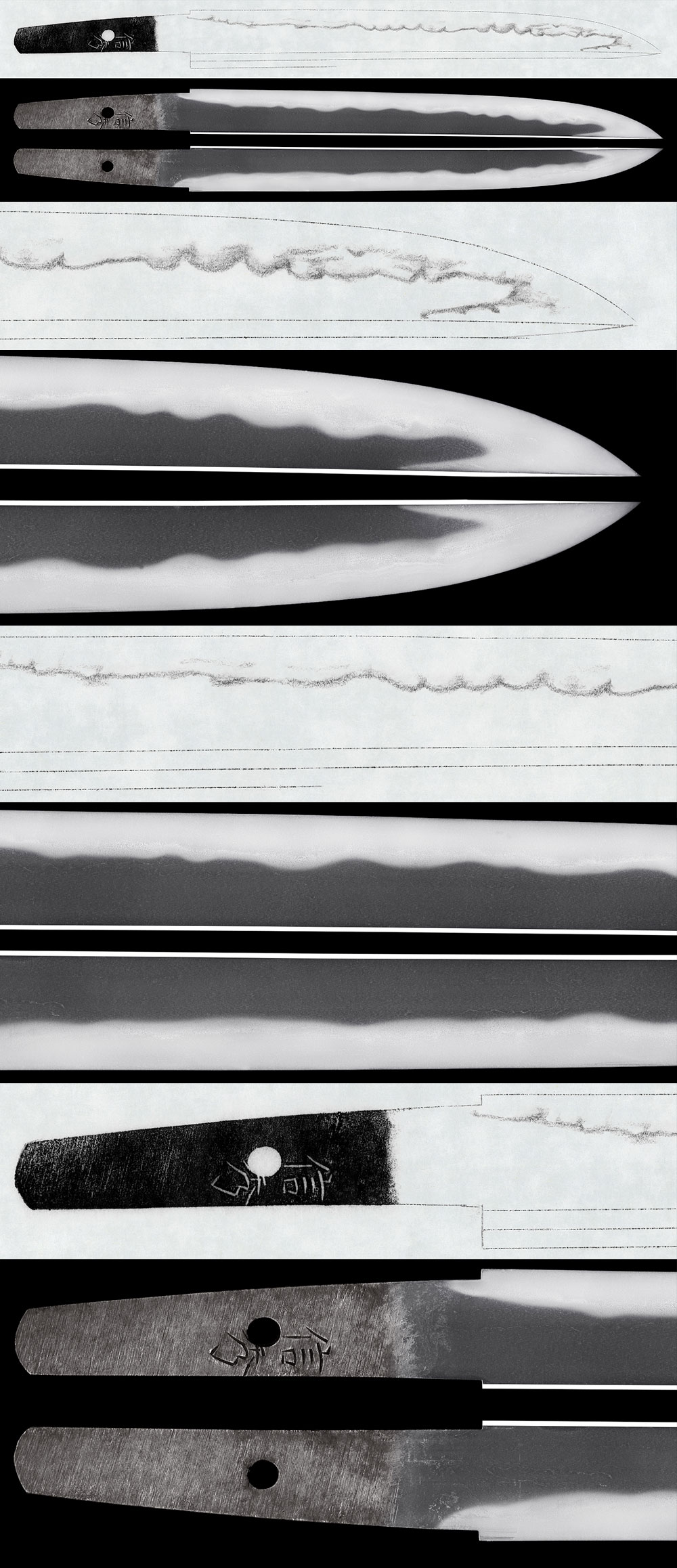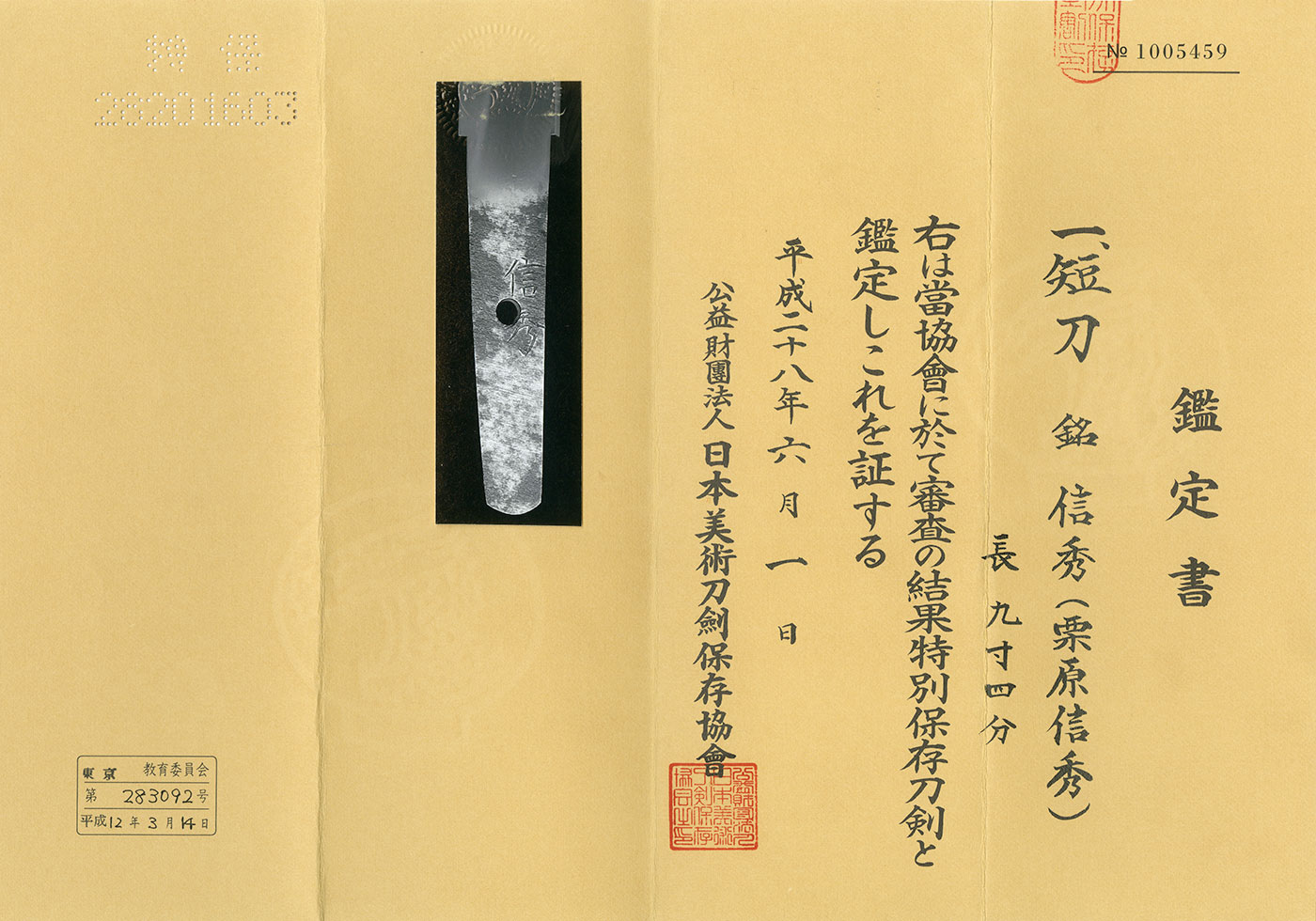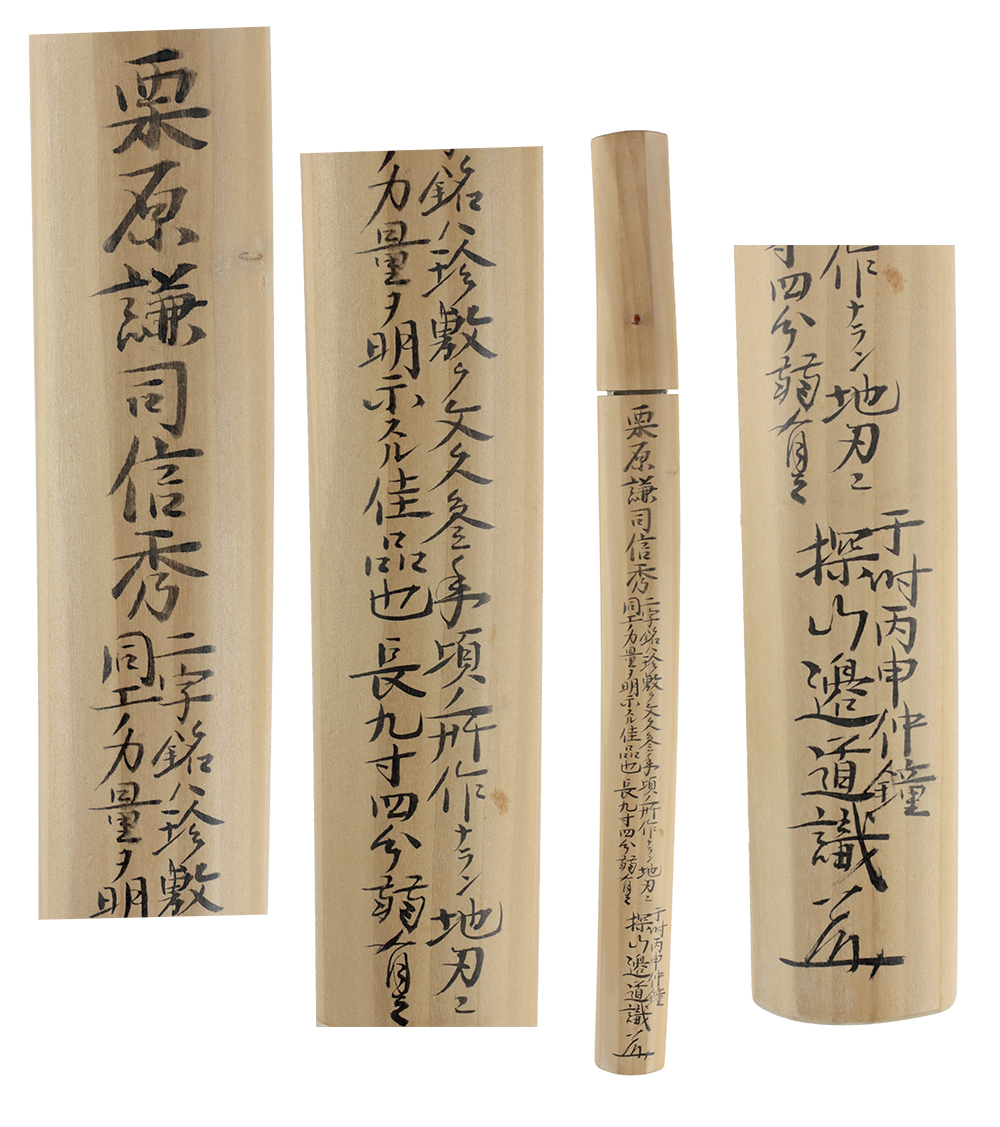Ordering number:AS23635
Tanto in Shirasaya with Koshirae (NBTHK Tokubetsu Hozon Token)
Signature: Nobuhide(Kurihara Nobuhide)
信秀(栗原信秀)
Sayagaki: The two-character signature of Kurahara Kenji Nobuhide is rare. It is considered a fine piece that demonstrates his abilities, likely made around the Bunkyu era.
Blade length is 9Sun 4Bu.
Written by Mr.Tanobe
Shinshinto: Jyojyo Saku: Musashi
(We divide 4 sections for each sword as Saijyo saku, Jyojyo saku
Jyo saku and regular saku)
This blade belongs to Jyo saku ranking.
Polished.
Habaki: Silver single foil.
Blade length: 28.4 cm (11.18 in).
Curvature: 0 cm (0 in).
Mekugi holes: 1
Width at base: 2.85 cm (1.12 in).
Thickness of rim: 0.8 cm (0.31 in).
Sword weight: 365 grams.
Era: Late Edo period, around Genji (1864).
Shape: The body has a wide width and thick Kasane, reminiscent of armor-piercing swords, making it a dignified piece.
Jigane: Fine ko-itame hada with clear jigane and a well-defined landscape.
Hamon: The hamon is a lively mix of nie with irregular patterns, deep nioiguchi, and sharp returns reminiscent of his master’s, Kiyomaro, style, including sunagashi and kinsuji, suggesting it was influenced by his master.
Features: Nobuhide was a pupil of Yamashiro Kiyomaro from Echigo, known as Kurahara Kenji, who received the title of Chikuzen no Kami around the first year of Keio and also made swords in Osaka. He had skills in carving, originally leveraging his abilities as a mirror maker. Although Kiyomaro consistently did not produce carved works, Nobuhide fully utilized his carving skills. After the sword abolition edict (in the 4th year of Meiji), it is said that he secluded himself in Echigo and spent his days at home.
Koshirae:
Fuchikashira: Black horn.
Saya: Dark brown
Menuki: High-relief peony motif on shakudo ground, with gold color painting.
Kozuka: High-relief peony and lion motif on shakudo ground with gold color painting.
Aoi Art’s Comment: Regarding Kurahara Nobuhide, the research on him is extensively covered and well-documented. Reading it gives a good understanding of his movements and thought processes at that time, which is quite interesting. In any case, the reason why Nobuhide, who used to make mirrors and festival floats, became a disciple of Kiyomaro and emerged as a top-class swordsmith is believed to be due to his exceptional knowledge of carving and having an eye for sword making. Nobuhide was likely very wealthy, which would have allowed him free access to Kiyomaro’s forging site, probably unique to him. While focusing on the works of the Soshu tradition, Nobuhide seriously studied and produced individual works, possibly including carving, similar to this tanto. This research publication includes a tanto very similar to this one, intriguing for its two-character signature resembling that of Sayamono. It is likely that Nobuhide, while being robust, decided to carve the signature in a short manner, almost certainly taking inspiration from Sayamono. I feel strongly that the signature engraved in two characters is unmistakably inspired by Sayamono. Please consider acquiring this fine piece.
NBTHK Tokubetsu Hozon Token
AoiArt estimation paper
Whole Oshigata
Auction Starting Price:1,200,000 JPY-.






